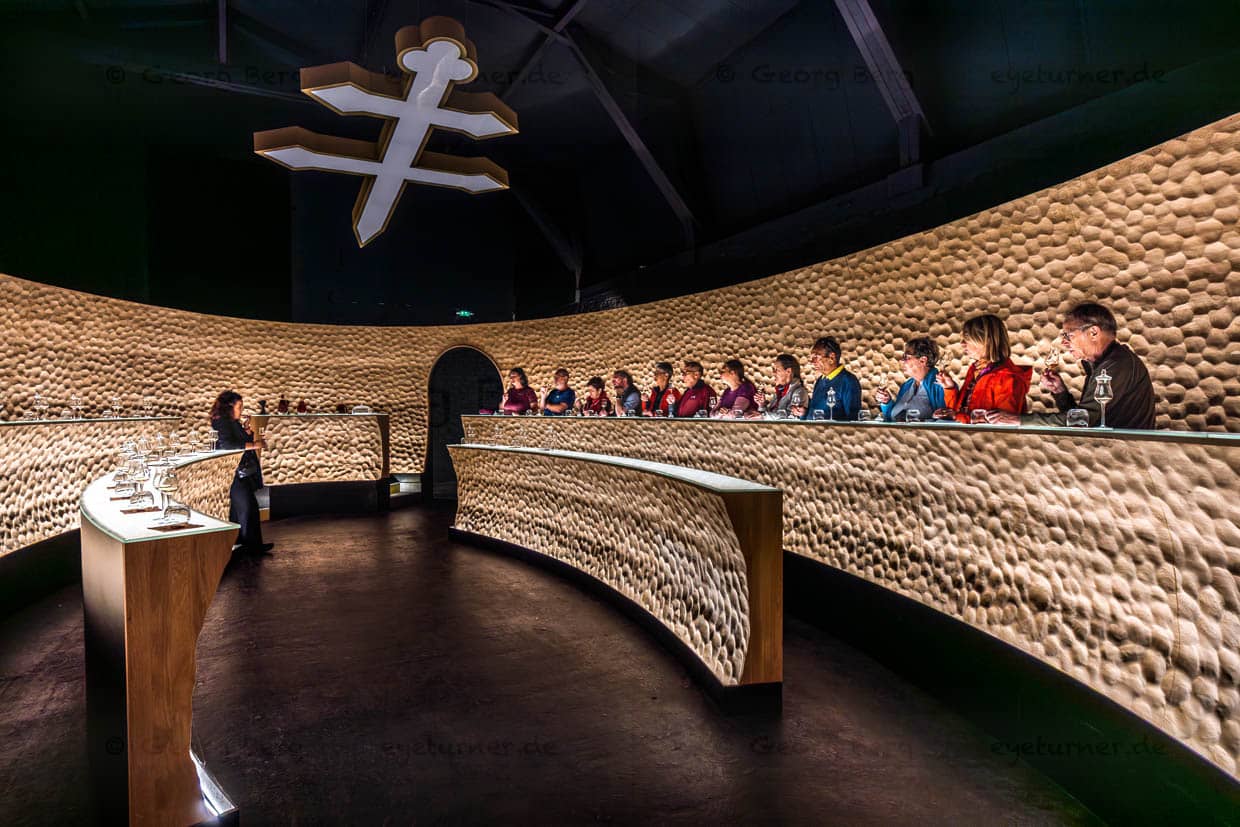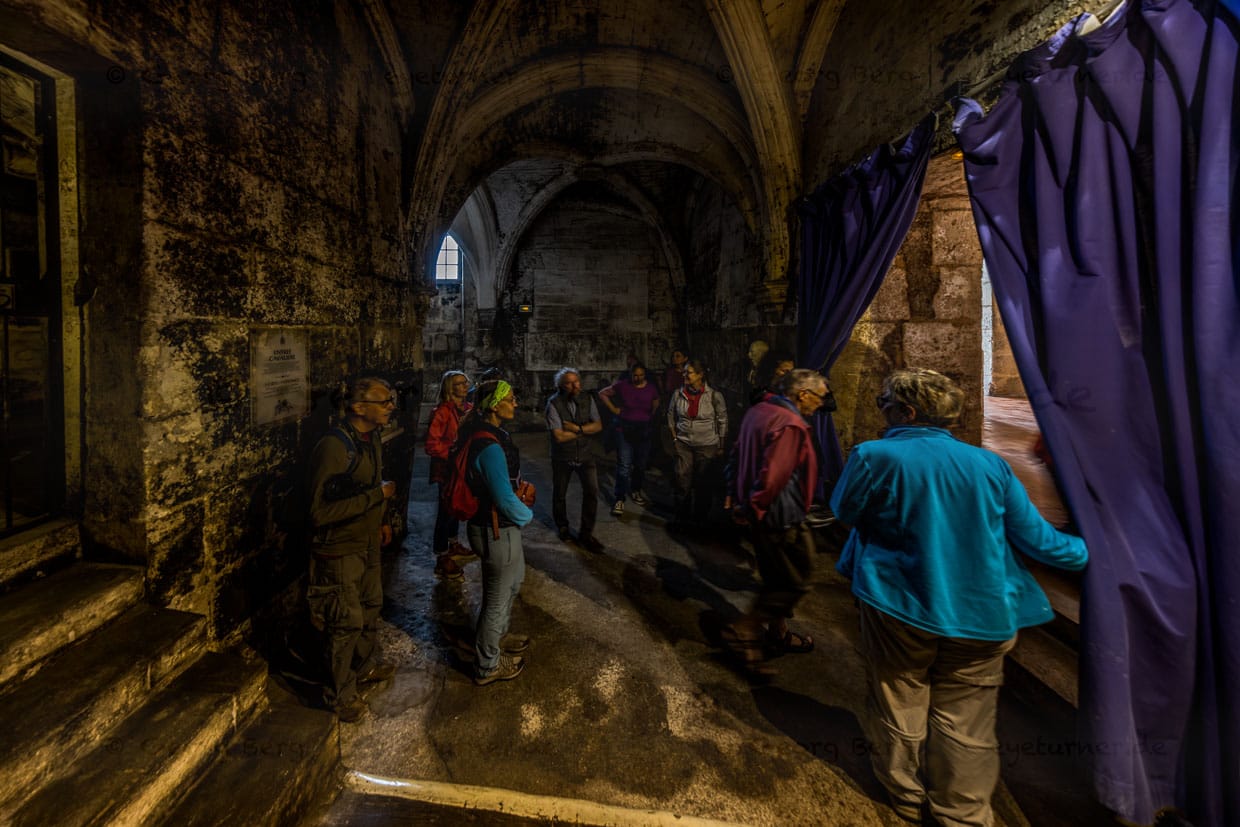The French are masters at staging experiences. Just think of the spectacular opening ceremony of the 2024 Olympic Games. Wine tourism is also a French invention. In Bordeaux, Burgundy and Alsace, it was already possible to visit selected wine regions in the 19th century. Century to visit selected wineries. Today, Route des Vins based on the French model lead through all the wine regions of the world. When it comes to high-proof pleasures, we now speak of spirit tourism – a somewhat unwieldy term. But here, too, it is worth taking a look at France, where the vaulted cellars of world-famous spirits are skillfully staged.

From cellar visit to spiritual tourism
Spirit tourism offers more variety than wine tourism: cognac, absinthe, rum, vermouth, whisky, artisanal liqueurs, traditional punches and other alcoholic specialties, deeply rooted in the local culture. It often complements trips perfectly, arouses interest in the traditions and history of the host country or motivates travel groups to leave the hotel complex together.

Spirits with history
When you visit a distillery, you learn the art of distilling and taste the results. Spirit tourism combines enjoyment with the history of the distilleries and at the same time strengthens the regional economy. Absinthe, cognac and the vermouth Noilly Prat are such spirits with a past: they carry myths or the enthusiasm of famous personalities who turned them into legends. From the scandalous absinthe to the fine cognac from the city on the Charente to the Noilly Prat vermouth that made a martini perfect for James Bond and Queen Elizabeth II. A visit to Noilly Prat, Baron de Otard and the green fairy.

Absinthe, cognac and vermouth are only connected, if at all, by the use of wine or wine distillate as an alcohol base. But while cognac derives its aromas solely from wine and oak barrels, the taste of Noilly Prat and absinthe is primarily characterized by herbs. However, the ingredients and production process remain unique and typical for each spirit. Nowadays, almost every tour of a spirits producer’s cellar ends in a chic sales room, where souvenirs are on offer alongside the main product. Cognac and absinthe even have their own museums – spirit tourism at its best!

On the road on the Route de l’Absinthe
At the Maison de l’Absinthe in Môtiers, you can immerse yourself in the turbulent history of absinthe. Once prized as a remedy in the Middle Ages, the green drink fell into disrepute at the beginning of the 20th century. With the dripping cold spring, it became a typical prop in films such as Bram Stoker’s Dracula. France, the country of its greatest successes, imposed a 96-year ban. A trip along the route of absinthe in the French Franche-Comté and a visit to the absinthe museum in Val de Travers reveal the secrets of the mystical blue hour. The ban came into force in Switzerland in 1910, followed by France in 1915. Today, a well-marked 48-kilometre hiking route leads from Pontarlier in France to Noiraigue in Switzerland. Along the way, distilleries, brasseries, inns, castles, hotels and restaurants invite you to discover and experience the history of absinthe. To the detailed report Absinthe – forbidden and rediscovered

From the royal residence to the Cognac House
In Cognac on the Charente, everything revolves around the famous brandy. To date, there are around 260 cognac houses. Among the best known are the market leaders Hennessy and Rémy Martin. The Baron de Otard house is one of the oldest and most traditional. Here, not only the cognac barrels but also the entire building breathe the history of King François I. Visitors can experience exciting insights into cognac production and the past of the former royal residence on guided tours of the former château. The Musée des Savoir-faire du Cognac also entices visitors with further discoveries. There is a wide selection of tours through the Cognac houses, but a visit to Baron de Otard also offers an insight into the history of the town.

Noilly Prat – favorite of the Queen
The Noilly Prat headquarters is located in Languedoc, on the quiet port of Marseillan, around 50 kilometers from Montpellier. Vermouth has been produced here since 1859. Noilly Prat is a classic, dry French vermouth – not a distillate, not a liqueur, but a wine refined with herbs. Visitors can sample the individual stages of production on a guided tour. The white wines are stored outdoors: They mature for over twelve months in old oak barrels, with sun and wind shaping their character. After seven months in the courtyard, the sea breeze gives the wine a distinctive note. It is then flavored with up to 20 herbs and spices such as chamomile, coriander, cloves and orange peel. This is followed by blending with mistelle, a sweet wine addition. The vermouth is not distilled, but filtered and bottled after flavoring. With an alcohol content of around 18% by volume, Noilly Prat is considered the epitome of dry vermouth – ideal on its own as an aperitif or as an ingredient in cocktails such as Martini and Manhattan. Tickets for a tour are available all year round and start at just 12 euros.

The research trip was supported by Nouvelle-Aquitaine Tourism and Die Landpartie


